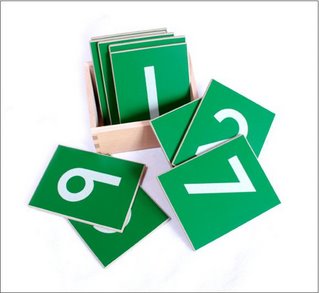First, a confession. I hated math when I was growing up. There are lots of reasons for this – boring math teachers, stultifying textbooks, and repetitive busywork would be among them. Not to mention that I enjoy subjects where the “right” answer can be any answer you can adequately defend, not one where the answers are set in stone.
I got through high school and college with the absolute minimum in math requirements. In fact, joyfully, I had enough math credits in high school that I didn’t even take math my senior year. I took three history classes, though!
A few years later, I took the Montessori training. The training changed everything I had previously thought about learning and education, but no more so than in the field of mathematics. The Montessori math materials, in all of their golden-beaded glory, turned me into a lover of math and math concepts.
Naturally, I’ve wanted my own children to love math and not hate it as I did. I’ve worked hard to keep a positive attitude towards math both as a teacher in a classroom and a homeschooling mom. It must be working, because my kids love math. Nothing we’ve done remotely resembles the stuffy, leaden math curriculum of my own youth.
The Beauty of Montessori Math Materials
 What makes Montessori math so different? Much of the difference is because of the hands-on, concrete nature of the materials. Beautiful in their simplicity, they take the most complicated of math concepts and break them into easy-to-understand bits of information. (If you’re not familiar with Montessori math materials, please see the links at the bottom of this post for more info.)
What makes Montessori math so different? Much of the difference is because of the hands-on, concrete nature of the materials. Beautiful in their simplicity, they take the most complicated of math concepts and break them into easy-to-understand bits of information. (If you’re not familiar with Montessori math materials, please see the links at the bottom of this post for more info.)
In traditional education, we expect children to be able to mentally envision math operations long before they possess the neurological power to do so. No wonder they struggle to understand and end up frustrated and upset. Montessori materials also contain control of error and clarity of purpose – both characteristics that empower children rather than making them dependent on teachers or textbooks.
How Should Math Look in Montessori?
Mull over this quote from Susan Stephenson of The Michael Olaf Montessori Company as she talks about math in the primary (3-6) classroom:
“Many people misunderstand, at first, what it means to learn math at this age. They remember how they learned the multiplication tables for example—tedious and boring, hours of painful repetition that was certainly not the first choice of activities.
In the 3-6 class, children love to learn the quantities and symbols for numbers in the thousands. They often learn addition, subtraction, multiplication and division with the decimal system and with fractions, simultaneously.
None of this work is required of the children, but it is offered, presented with manipulative materials to one child at a time – by the adult and sometimes another child. There are no teachers lecturing to a group of children who are required to sit still and listen. The children choose this work, and repeat each step with joy and enthusiasm until they are ready to move to the next step.”
Several things she mentions jump out at me. One of the most crucial is that the child chooses their own math activities rather than having the entire class do the same work at the same time. This freedom ensures that children will work as long as they need to on any given material, only moving on when they are thoroughly ready to do so.
Another point she makes is that children can work on several math materials simultaneously. This parallel work brings out the natural symmetry in mathematical operations – what child isn’t delighted to discover that subtraction is the opposite of addition, and that division and multiplication are flipped versions of each other?
If you fear math, or are afraid of some of the more complicated math materials, take a deep breath and see them in a new way. Practice them by yourself as needed, and as you prepare presentations for the children, let the Montessori math materials wash away the unpleasant memories you might have from your own schooling experience.
A Real-Life Example of Montessori Math in Action
Recently, a traditional homeschooling friend of mine was shocked that my just-turned-seven-year-old son had taught himself the multiplication tables. “How did he do that?” she asked incredulously. How did he do that, indeed! Well, he’s been using the Multiplication Bead Board since he was five. After he had done each number several times with that material, he started setting out 15-20 multiplication equations on his rug, putting out the answer tiles, and then checking his work with the Multiplication Finger Charts. He used both materials for about a year.
When he was ready to practice the multiplication facts without needing any concrete material, I put out the Multiplication Wheels and he worked on those on and off for another year. This past fall, he got out multiplication flash cards (on his own) and worked with them until he knew every answer with no mistakes. Not only does he really, truly understand multiplication (2 x 3 is two sets of three), but he did it all of his own volition. I never once told him to choose multiplication materials. I just made them available and helped when he needed me.
The verdict is in: let the child set the pace, and they will choose how and when to learn. The Montessori math materials are just tools, but they are powerful tools that can transform a child – and us right along with them.

